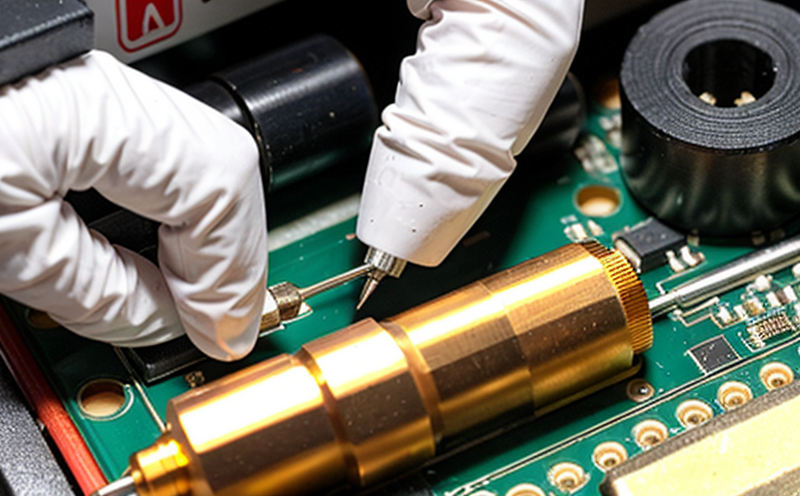Electronic solder joint inspection
The quality and reliability of electronic devices are heavily reliant on the integrity of their solder joints. Solder joints serve as critical connections in printed circuit boards (PCBs) that ensure electrical conductivity between components. Ensuring these joints meet specific standards is paramount for preventing failure, reducing rework costs, and maintaining product performance over time.
Our electronic solder joint inspection service leverages advanced microscopy techniques to analyze the microstructure of solder joints. This allows us to assess the quality of the intermetallic layer (IML), which forms between the solder and the metal surfaces it connects. The IML is crucial as its formation can indicate the effectiveness of the soldering process.
Our inspection service focuses on several key areas:
- Purity and cleanliness: Ensuring that there are no foreign particles or residues within the joint.
- Solder wetting behavior: Evaluating how well the solder has adhered to the surface of the components. Poor wetting can lead to poor electrical conductivity.
- Joint geometry and dimensions: Checking that the joints are in accordance with standard specifications, which is important for ensuring proper mechanical stability.
- Void content: Identifying any voids within the joint, as these can compromise the integrity of the connection.
- Joint morphology: Examining the overall structure and appearance of the solder joints to identify any irregularities that might indicate a poor quality process.
The inspection process begins with thorough preparation of the sample. The PCBs are carefully cleaned and then inspected using optical microscopes or scanning electron microscopes (SEM). SEM is particularly useful for examining the fine details of the joint structure, as it provides higher resolution images.
Once the inspection is complete, our team generates detailed reports that provide a comprehensive analysis of each solder joint. These reports are invaluable tools for quality managers and compliance officers in ensuring adherence to industry standards such as IPC-A-610 (International Interconnect Technology Profile) or J-STD-003 (Joint Technical Standard).
Our service is tailored not only to meet the needs of electronics manufacturers but also to support R&D engineers in optimizing their processes and improving product design. By providing detailed insights into potential defects, our inspections help procurement teams select suppliers who adhere to high-quality standards.
Benefits
- Improved Product Quality: Ensuring that solder joints meet the highest quality standards minimizes defects and improves overall product reliability.
- Cost Savings: By identifying potential issues early in the production process, you can avoid costly rework and replacement of defective components.
- Increased Efficiency: Our inspection service helps streamline your production processes by providing actionable insights that allow for quick corrective actions.
- Better Compliance: Adherence to international standards enhances your company's reputation and ensures compliance with regulatory requirements.
- Enhanced Customer Satisfaction: Providing high-quality products increases customer satisfaction, leading to stronger brand loyalty and repeat business.
- Competitive Advantage: Demonstrating a commitment to quality can set you apart from competitors in the market.
Quality and Reliability Assurance
The process of quality assurance involves ensuring that all products or services consistently meet specified requirements. In the context of electronic solder joint inspection, this means adhering to stringent standards such as IPC-A-610, which defines the acceptable levels of defects in printed circuit boards.
Our service provides a robust framework for quality and reliability assurance by offering detailed reports that outline any issues found during the inspection. These reports are essential tools for compliance officers and quality managers who need to ensure that their products meet regulatory requirements such as ISO 9001:2015 or ASME/ANSI Y14.5M.
By leveraging our expertise in electronic solder joint inspection, you can enhance your company's reputation for reliability and quality. This not only builds trust with customers but also contributes to long-term success in the industry.
International Acceptance and Recognition
The importance of international acceptance cannot be overstated when it comes to electronic solder joint inspection. Many industries operate on a global scale, requiring that their quality assurance processes are recognized across borders.
Our service is designed to meet the highest international standards, ensuring that your inspections are accepted in markets around the world. By adhering to ISO 9001:2015 and ASME/ANSI Y14.5M, we provide a consistent and reliable quality assurance process that is recognized globally.
The recognition of our service extends beyond mere compliance with international standards. It also includes the trust and confidence that comes from knowing that your inspections are conducted by experts in the field. This trust is essential for maintaining strong relationships with customers and suppliers, as well as for navigating the complexities of global trade regulations.





